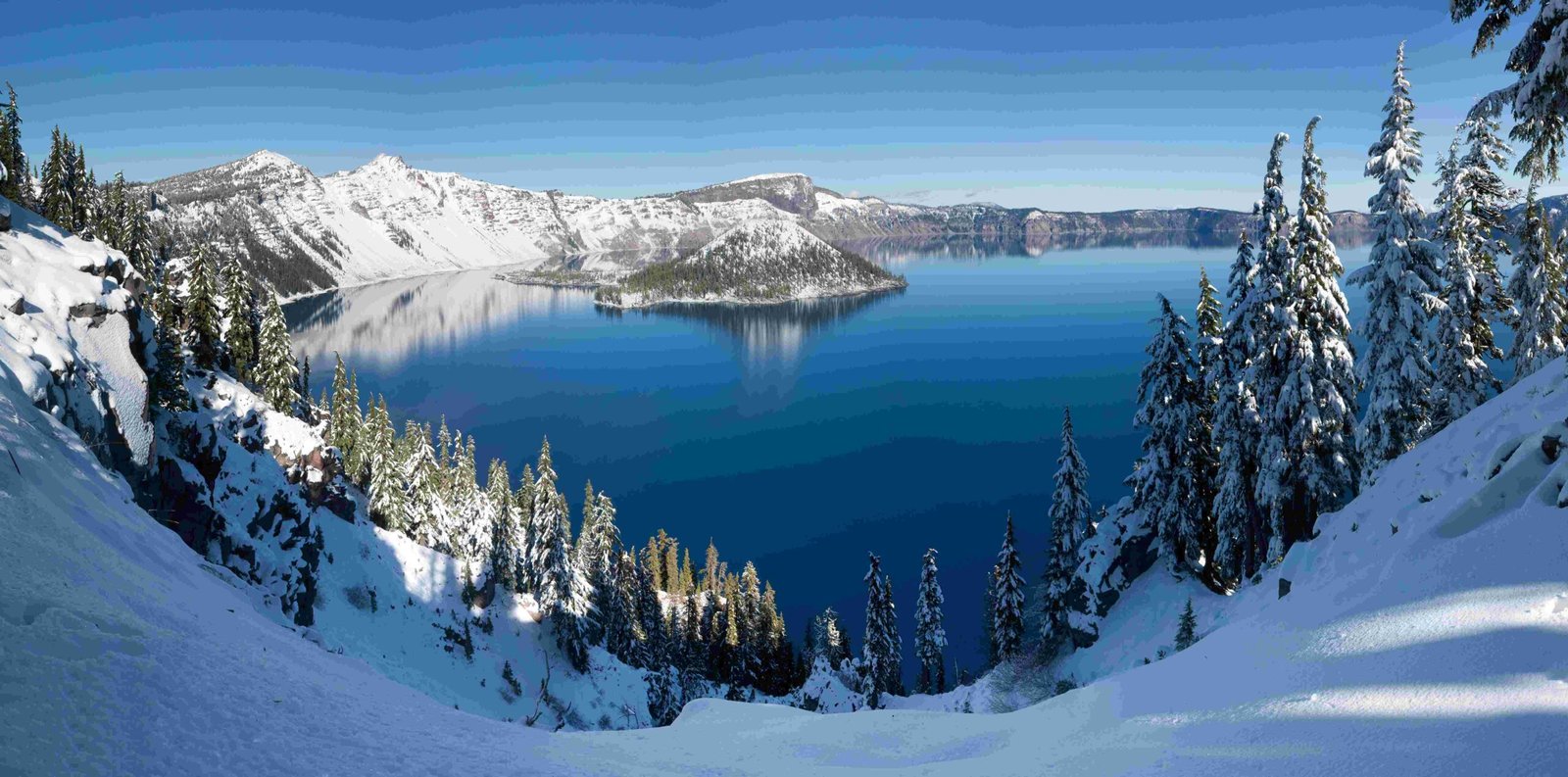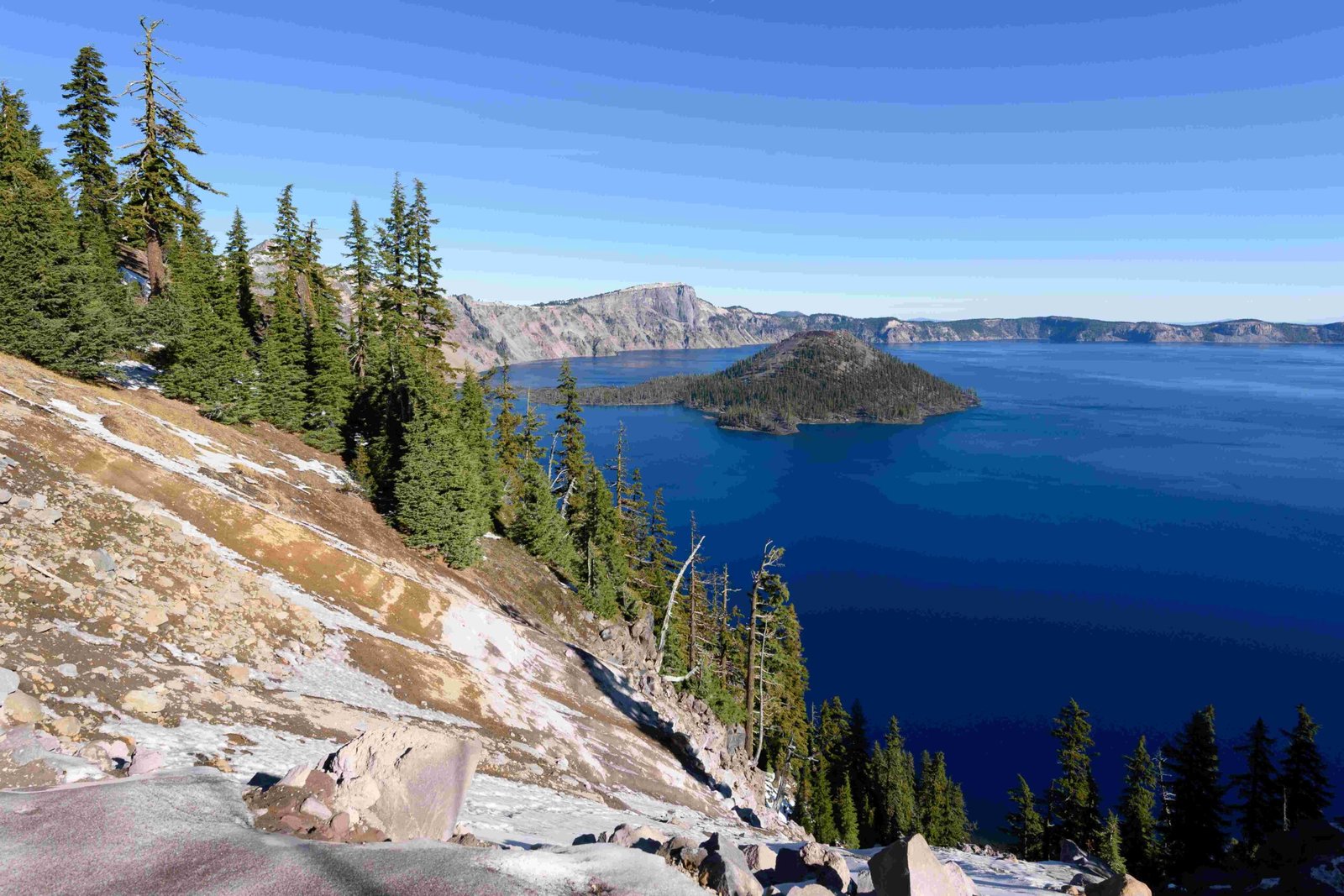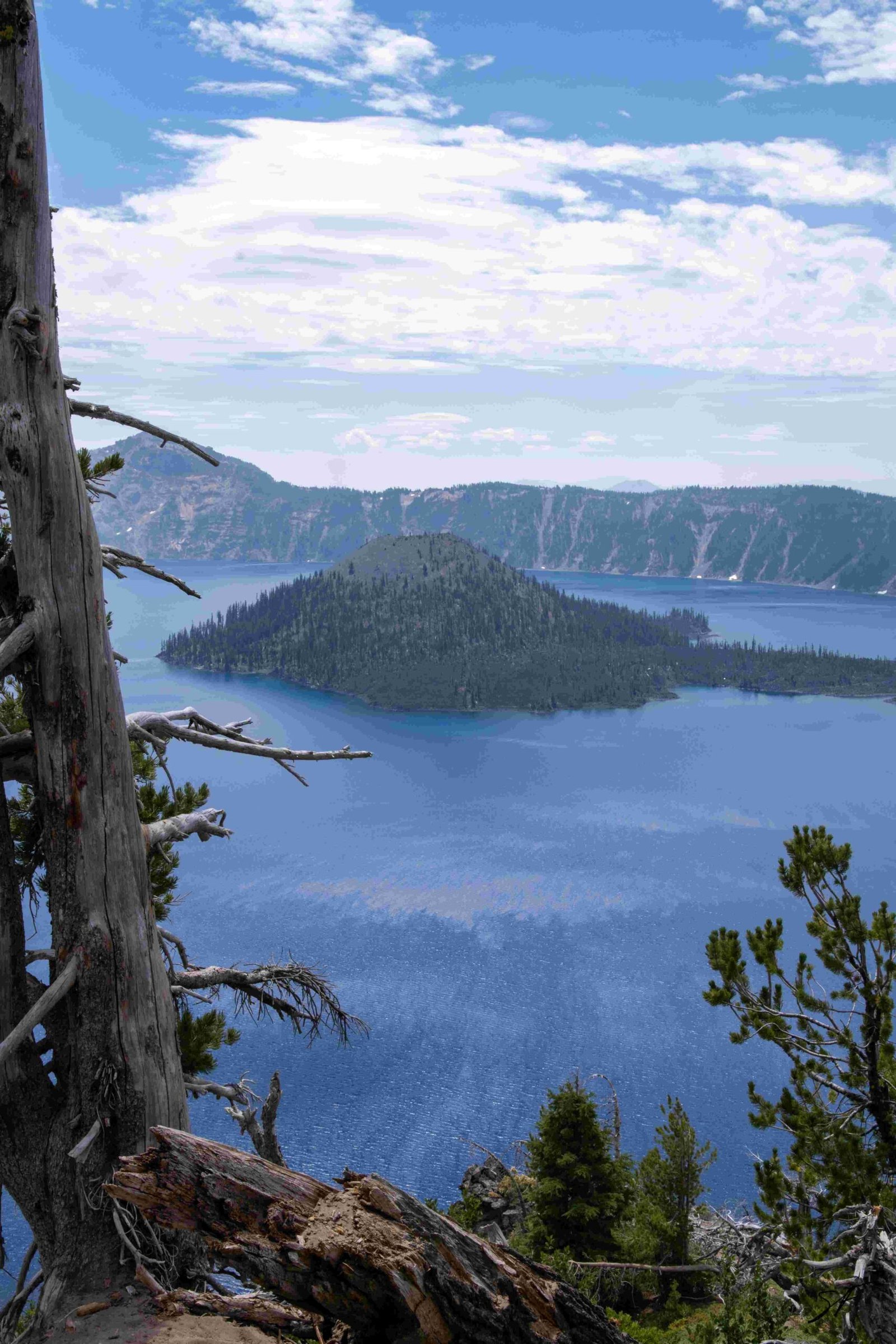Sentinel Rock at Crater Lake is a remarkable geological feature that offers visitors a unique glimpse into the volcanic history of the area. This andesite formation, part of the caldera wall, showcases layers of glacial till, lump pumice, and block layers. Sentinel Rock provides stunning panoramic views of Crater Lake and serves as a testament to the complex geological processes that shaped this iconic landscape. Hikers and geology enthusiasts alike are drawn to its distinctive features and the insights it offers into the formation of Crater Lake.
What is the Geological Significance of Sentinel Rock?

Sentinel Rock stands as a silent sentinel, guarding the secrets of Crater Lake’s volcanic past. Its geological significance lies in its composition and the story it tells about the area’s formation:
- Rock Composition: Sentinel Rock is primarily composed of andesite lava flows.
- Layered History: It features distinct layers that reveal different stages of volcanic activity:
- Andesite lava flow at the base
- Layers of glacial till
- Lump pumice deposits
-
Block layers from the final volcanic explosions
-
Evidence of Glaciation: The presence of glacial till indicates periods of glacial advance and retreat.
- Volcanic Sequence: Sentinel Rock provides a visual timeline of the volcanic events that led to the formation of Crater Lake.
This unique geological formation offers researchers and visitors alike a window into the dramatic geological history of the Crater Lake region.
How Was Sentinel Rock Formed?

The formation of Sentinel Rock is a testament to the dynamic geological processes that shaped Crater Lake. Here’s a step-by-step breakdown of its formation:
- Initial Andesite Flow: A thick flow of andesite lava erupted from a vent beneath what is now Sentinel Rock.
- Glacial Activity: Glaciers advanced over the area, depositing layers of till on top of the andesite.
- Volcanic Eruptions: Subsequent volcanic activity deposited layers of pumice and other volcanic materials.
- Caldera Formation: The collapse of Mount Mazama created the caldera, with Sentinel Rock remaining as part of the caldera wall.
- Erosion and Weathering: Over time, erosion and weathering processes have further shaped the rock’s appearance.
This sequence of events has resulted in the distinctive layered appearance of Sentinel Rock, making it a valuable site for understanding the geological history of Crater Lake.
What Can Visitors See at Sentinel Rock?
Sentinel Rock offers visitors a wealth of geological and scenic wonders:
- Panoramic Views: From the top of Sentinel Point, visitors can enjoy breathtaking 360-degree views of Crater Lake and the surrounding caldera.
- Geological Layers: The exposed rock face reveals distinct layers of volcanic and glacial deposits, providing a visual timeline of the area’s formation.
- Unique Vegetation: The area around Sentinel Rock features lush vegetation, particularly where springs emerge at the contact between different rock layers.
- Wildlife: Keen observers may spot various bird species and small mammals that inhabit the area.
| Feature | Description |
|---|---|
| Rock Layers | Visible strata of andesite, glacial till, and volcanic deposits |
| Viewpoints | Panoramic vistas of Crater Lake and the caldera |
| Flora | Diverse plant life, especially near spring areas |
| Fauna | Opportunity to observe local wildlife in their natural habitat |
How Accessible is Sentinel Rock to Visitors?
Accessibility to Sentinel Rock varies depending on visitor mobility and seasonal conditions:
- Trail Access:
- A moderate hiking trail leads to Sentinel Point
-
The trail involves some elevation gain and may be challenging for some visitors
-
Parking:
- Parking is available along the Rim Road near the trailhead
-
During peak season, parking can be limited
-
Seasonal Considerations:
- The trail is typically open from late spring to early fall
-
Winter conditions may make the trail inaccessible or dangerous
-
Accessibility for Mobility-Impaired Visitors:
- The trail is not suitable for wheelchairs or those with significant mobility issues
- Some viewpoints of Sentinel Rock may be visible from accessible areas along the Rim Road
Visitors should check current conditions and their physical capabilities before attempting the hike to Sentinel Rock.
What is the Best Time to Visit Sentinel Rock?
The optimal time to visit Sentinel Rock depends on various factors:
- Season:
- Summer (July-August): Peak season with the best weather and full accessibility
- Spring/Fall: Less crowded, but potential for unpredictable weather
-
Winter: Limited access due to snow, but potentially stunning snow-covered views
-
Time of Day:
- Early Morning: Crisp air and soft light for photography
- Midday: Clearest views of the lake and surrounding landscape
-
Late Afternoon: Golden hour lighting for dramatic photographs
-
Weather Conditions:
- Clear days offer the best visibility and photographic opportunities
-
Foggy or misty conditions can create ethereal scenes but may obscure distant views
-
Crowd Levels:
- Weekdays tend to be less crowded than weekends
- Early morning or late afternoon visits can help avoid peak crowds
Visitors should plan their trip based on their preferences for weather, lighting, and crowd levels to make the most of their Sentinel Rock experience.
How Does Sentinel Rock Contribute to Our Understanding of Crater Lake’s Formation?
Sentinel Rock serves as a crucial piece in the puzzle of Crater Lake’s geological history:
- Volcanic Timeline: The layers visible in Sentinel Rock provide a chronological record of volcanic events.
- Glacial Evidence: Deposits of glacial till offer insights into the area’s glacial history.
- Caldera Formation: As part of the caldera wall, Sentinel Rock helps geologists understand the collapse of Mount Mazama.
- Hydrological Insights: Springs near Sentinel Rock contribute to our understanding of the area’s water systems.
By studying Sentinel Rock, geologists can piece together the complex series of events that led to the formation of Crater Lake, enhancing our overall understanding of volcanic processes and landscape evolution in the region.
What Safety Precautions Should Visitors Take When Exploring Sentinel Rock?
When visiting Sentinel Rock, safety should be a top priority. Here are some essential precautions:
- Trail Safety:
- Stay on designated trails to avoid damaging fragile ecosystems
- Wear appropriate footwear with good traction
-
Be cautious of loose rocks and uneven terrain
-
Weather Preparedness:
- Check weather forecasts before your visit
- Bring layers of clothing to adapt to changing conditions
-
Carry rain gear, even on clear days
-
Sun Protection:
- Use sunscreen, wear a hat, and bring sunglasses
-
The high elevation increases UV exposure
-
Hydration and Nutrition:
- Carry plenty of water
-
Bring energy-rich snacks for the hike
-
Wildlife Awareness:
- Keep a safe distance from any wildlife you encounter
-
Do not feed animals
-
Emergency Preparedness:
- Carry a basic first aid kit
- Bring a map and compass or GPS device
- Let someone know your hiking plans
By following these precautions, visitors can safely enjoy the geological wonders of Sentinel Rock and its surroundings.
Sentinel Rock at Crater Lake stands as a testament to the powerful geological forces that have shaped our planet. Its layered history, stunning views, and scientific significance make it a must-visit destination for anyone interested in geology, natural history, or simply breathtaking landscapes. As you stand before this ancient formation, you’ll be transported back in time, witnessing the legacy of volcanic eruptions, glacial movements, and the inexorable forces of erosion that have sculpted this remarkable feature. Sentinel Rock not only offers a window into Earth’s past but also provides a sobering reminder of the dynamic and ever-changing nature of our planet’s geology.
References:
1. https://www.craterlakeinstitute.com/research-at-crater-lake/geology/geologic-features/sentinel-rock/
2. https://pubs.usgs.gov/sim/2832/data/sim2832_pamphlet.pdf
3. https://www.craterlakeinstitute.com/research-at-crater-lake/geology/geologic-features/

